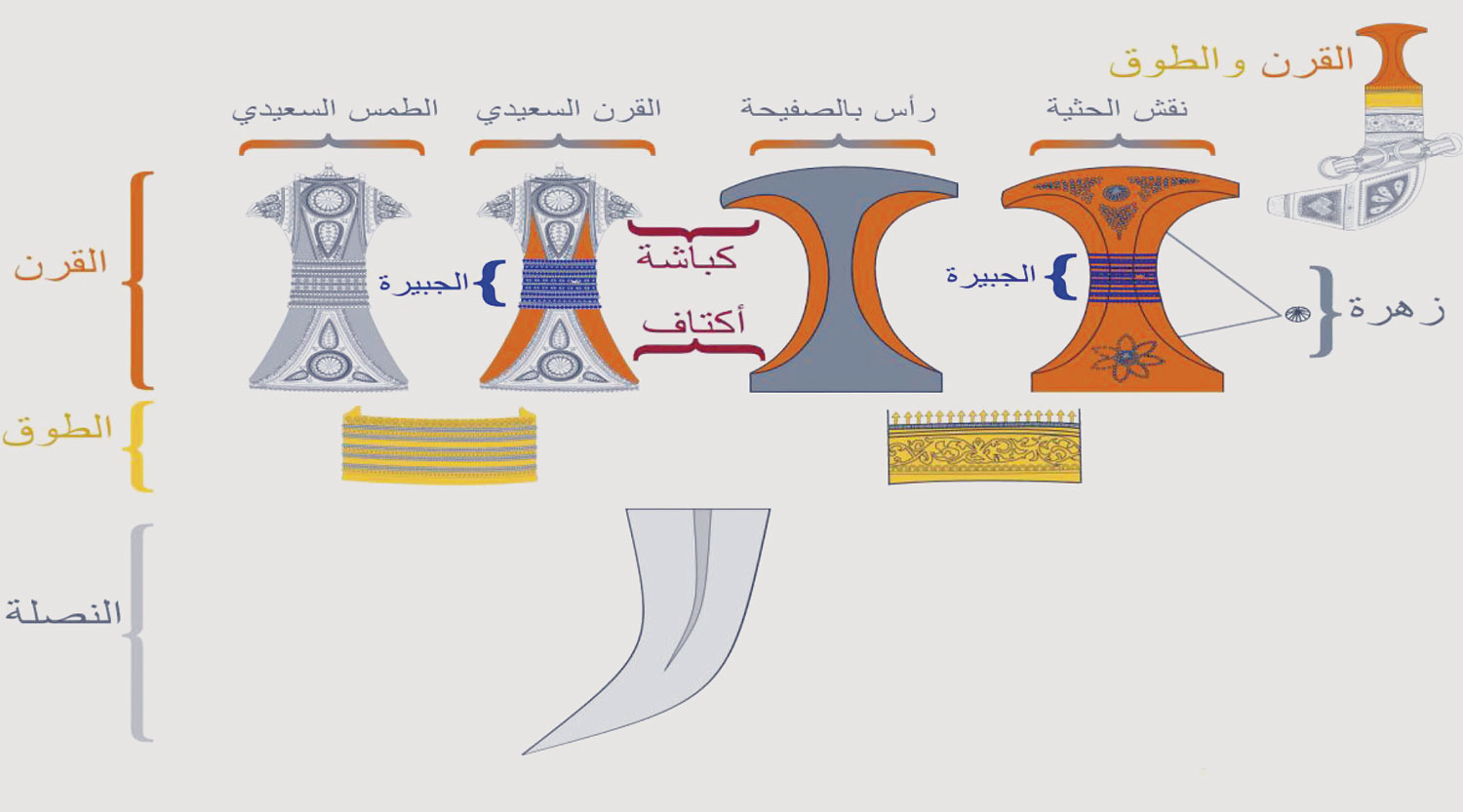

MUSCAT: Dr Ali bin Masoud al Sunaidy, Minister of Commerce and Industry, has issued a Ministerial Decision No (195/2017) revising the metrological standard of the Omani Khanjar (dagger). The standard was endorsed as: Omani Metrological Standard and Omani Technical Regulation, replacing the previous standard.
The Ministry of Commerce and Industry clarified that the metrological standards are mainly concerned with the general requirements of the Omani Khanjar, its types, and its main part, the one forged for costumes or the one used as souvenirs. Moreover, this standard does not apply to the Khanjars that are not to be sold.
The standard included the main guidelines for the Omani Khanjar and it is to be forged from silver. It is one of the necessary accessories of the traditional costumes of the Omani man and he has to wear it during social and national occasions. The Khanjar used to be forged of pure silver taken from old melted silver coins. From now on, the manufacturers should use pure silver alloys to forge the Khanjar.
The standard also established the shape of the Omani Khanjar specifying that it should be like oval cylinders, and the distance between their angles is no more than 4 centimetres and the distance between the two heads of the cylinder is no more than 10 centimetres. These measures can be changed according to the size of the Khanjar. The cylinder is to be bent to the left like a triangle, whose angle is between 85 and 95 degrees.

It is manufactured from different materials according to the province; for example, wood, ivory, animal’s horns or wax materials. The upper part of the handle is called ‘Kabasha or Kabshan’; the lower part is called ‘Kataf or Aktaf’.
The decision clarified that the Khanjar mainly consists of the hand, sheath, and belt and that its shape differs from one governorate to the other.
The handle types vary as follows: Plate handle is of silver plate and made in harmony with its shape; Hittite handle is decorated by small silver nails inside the handle; Shellac is a red wax which is used in some parts in the Khanjar. In most of the Khanjars, the handle or all of it is covered; and bano is a piece of leather embroidered with silver.
The standard also clarified that the materials used to manufacture the Khanjar are: industrial ivory, wood, cattle bones, and cattle horns.
Also, some animal leather is used, especially when it comes to manufacturing some parts of the Khanjar, the belt for example. In addition, fabrics like cotton and wool is used to manufacture liners for the handle. Precious stones can be used as alternatives to manufacture some parts in the Khanjar, mainly the handle.
The ministry emphasised the importance of the requirements when it comes to manufacturing the Khanjar, it should only be forged in the authorised places according to the good practice of industry. It should maintain the distinguished traits of the Omani Khanjar; most importantly, it should be made as per the ministerial decision with no modifications that would alter its identity.
The decision said that the Khanjar should have some data like the weight of silver or gold, year of manufacture, ‘Made In Oman’ statement, the Khanjar type, the name of manufacture, and any other data that the manufacturer see as important inscribed in it.
Oman Observer is now on the WhatsApp channel. Click here



